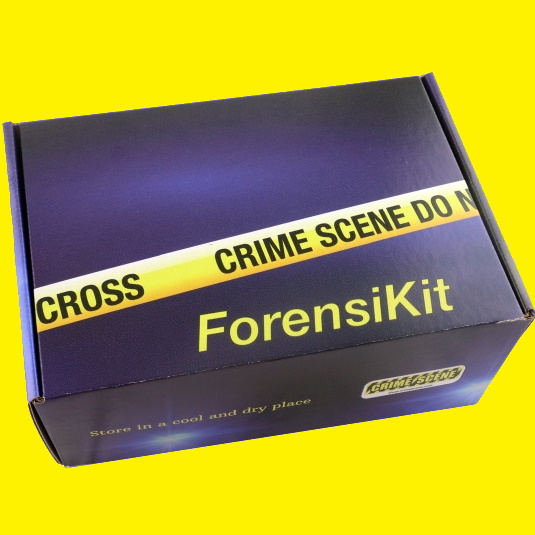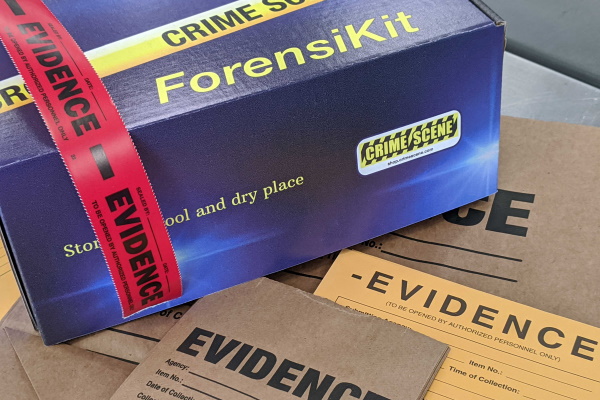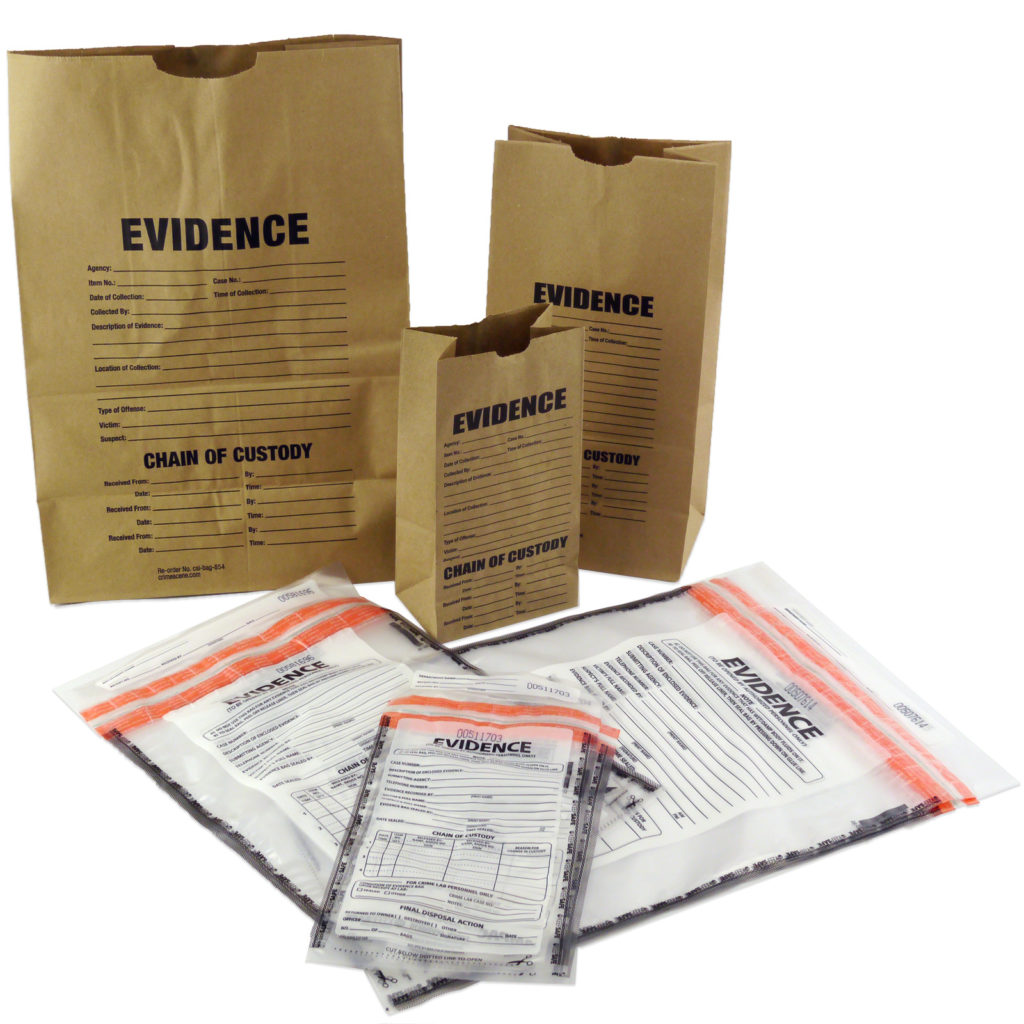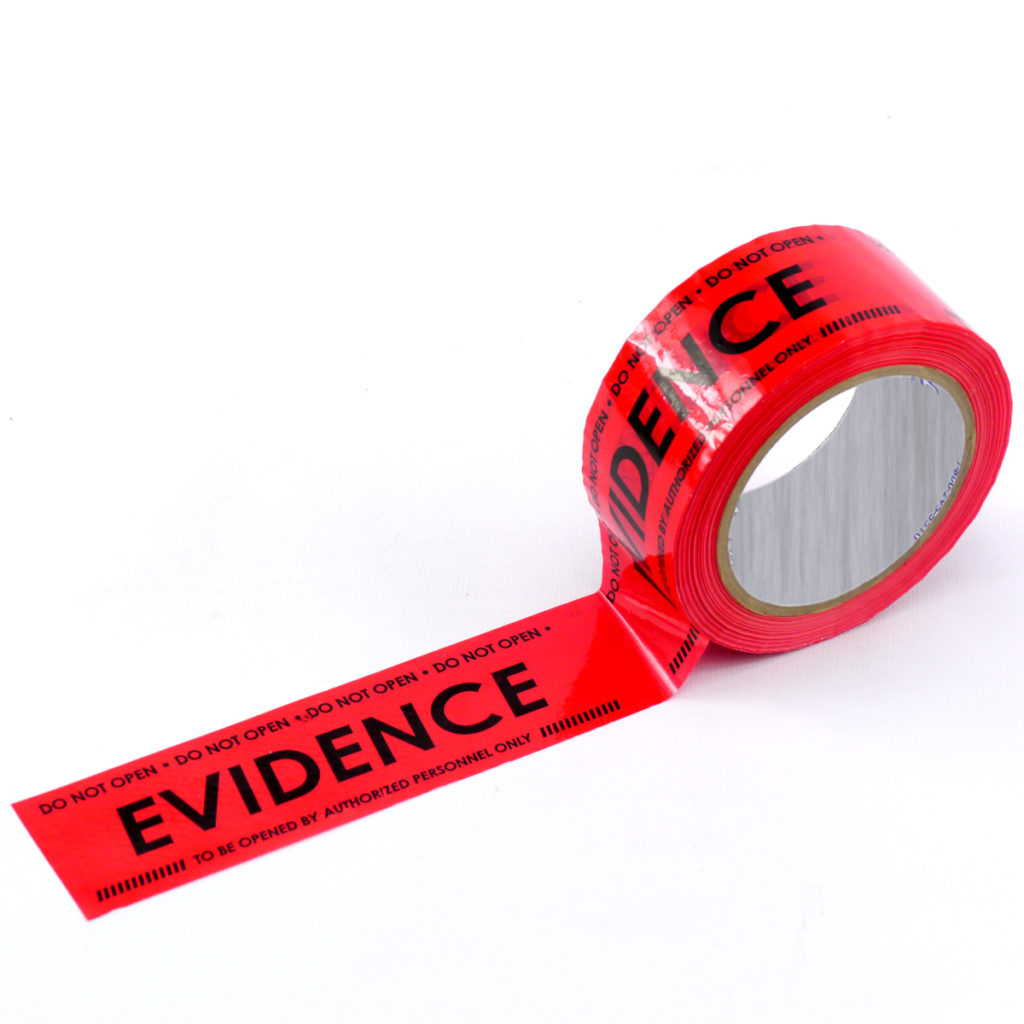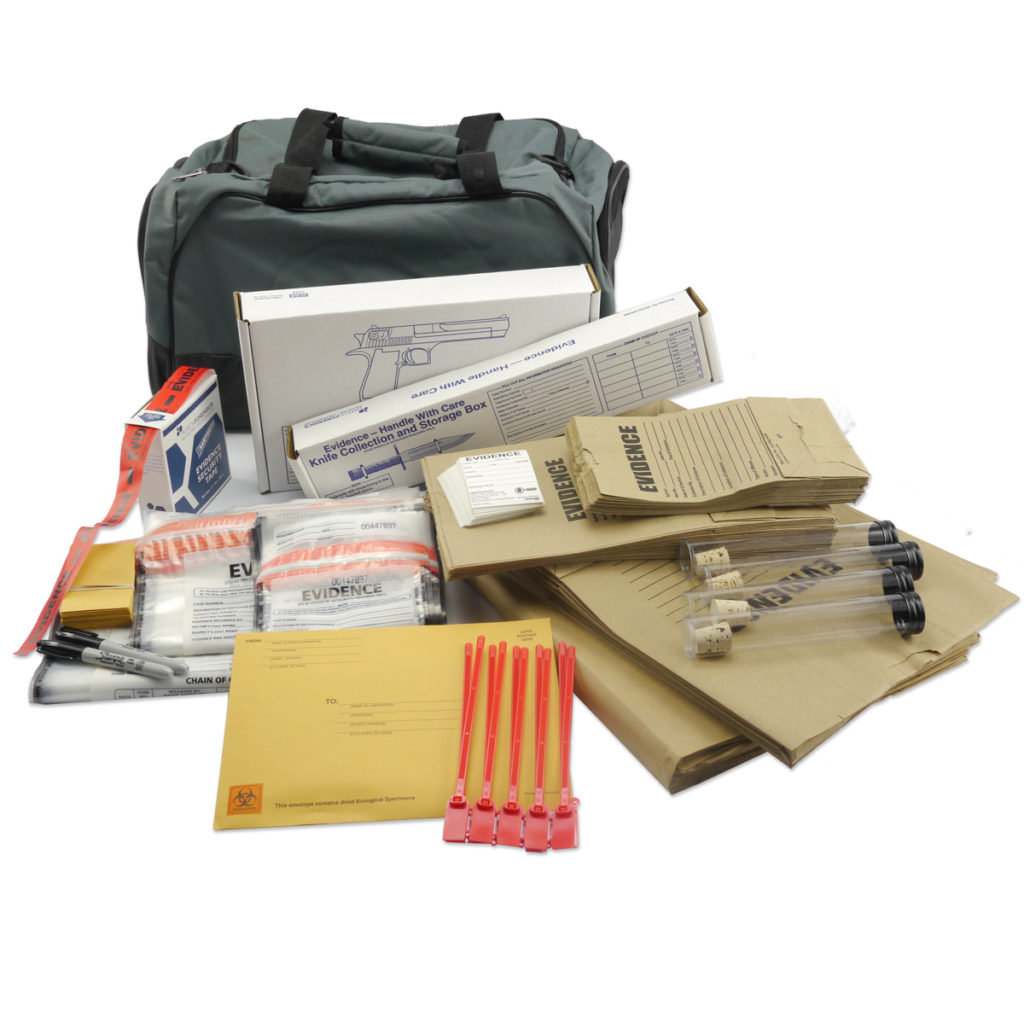The ForensiKit: Evidence Packaging box includes
- 20 paper evidence bags, small
- 10 paper evidence bags, medium
- 5 paper evidence bags, large
- 5 plastic evidence bags, medium
- 4 Instant ID evidence envelopes, small
- 2 Kraft evidence security envelopes, small
- 2 Kraft evidence security envelopes, large
- 5 coin envelopes, small
- One 10-ft roll tamper-indicating evidence sealing tape, sawtooth
- One 165-ft roll evidence box sealing tape, red
- Two 2-packs sterile swabs
- One sterile plastic tweezers
- One pair of Nitrile gloves
- One activity insert (Download another copy [PDF])
- One packing list (Download another copy [PDF])
No subscription required

Want another evidence packaging activity?
Where have you been?
In forensics, Locard’s Exchange can be summed up as the principle that any time you have contact with another person, place or thing, you leave something behind and you take something away with you.
For criminal investigations, that means the perpetrator leaves evidence behind at a crime scene (e.g., a fingerprint, a hair, etc.) and also takes something from the crime scene away with them (e.g., a carpet fiber, a pet hair, etc.).
That evidence can be used to connect a suspect to a crime scene.
For more information, see The Cornerstone of Forensic Science: Locard’s Exchange Principle by Douglas P. Lyle
Ready to try it for yourself?
You can do this activity on your own, or divide into teams and examine the other team’s evidence.
- Get a freshly laundered t-shirt.
- Examine the t-shirt for any trace evidence like hairs or fibers. If you find any, remove them.
- Wear the t-shirt for four hours or longer and do the same things you usually do. Keep track of where you go and what you do during the time you’re wearing that t-shirt.
- Remove the shirt (and exchange with the other team, if there is one).
- Examine the shirt under a bright light.
- List all the evidence you can find like hairs, fibers, stains, etc.
- Collect as much of the evidence as you can following the procedure.
- Write down your theory of where each evidence item came from (the neighbor’s cat, the classroom/office carpet, etc.)
- Compare your list of theories with the t-shirt wearer’s log of activities. Were your theories accurate?
Did you know?
Physical evidence is classified according to Individual or Class characteristics.
Class Characteristics are properties of physical evidence that narrow the identity of an individual to a certain group of people. Examples include blood type, hair, paint, size/type of shoe, and tire marks.
Individual Characteristics are properties of physical evidence that are unique to one individual. Examples include fingerprints, DNA, marking on bullets or tool marks, irregular & random wear patterns from tire/footwear impressions, handwriting, and irregular edges of broken objects.
For more information, see Differentiating Class and Individual Evidence by Douglas P. Lyle
